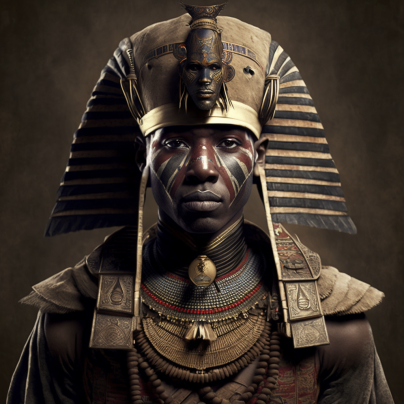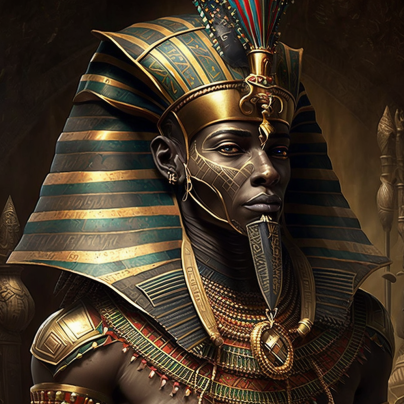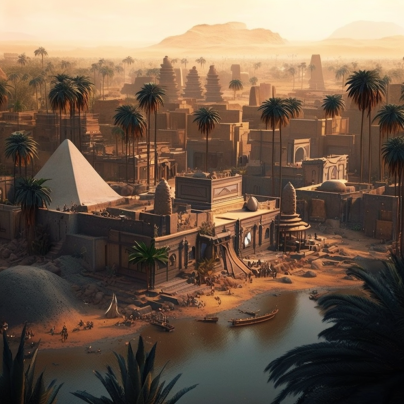Pharaoh Khufu
the great builder of the pyramid Giza


Khufu, also known as Cheops, was a pharaoh of ancient Kemet, also known as Egypt, and is most well-known for building the Great Pyramid of Giza, one of the Seven Wonders of the World. He was the second pharaoh of the Fourth Dynasty and is believed to have ruled from around 2589 BCE to 2566 BCE.
Khufu's origins and early life are uncertain, but it is believed that he was born into a powerful and wealthy family. He was the son of Sneferu, the first pharaoh of the Fourth Dynasty, and likely came to power through a combination of inheritance and military power.
One of the most significant events of Khufu's reign was the construction of the Great Pyramid of Giza. This massive structure, which still stands today, is the largest of the three pyramids in Giza and is considered one of the greatest architectural achievements in history. It is believed that the pyramid was built as a tomb for Khufu and that it took around 20 years to complete.
Khufu's reign was also marked by significant economic and military expansion. He is believed to have built a strong central government and a powerful economy, which allowed him to fund the construction of the Great Pyramid. He also likely conquered new territories and expanded Egypt's sphere of influence.
Khufu's legacy is also evident in the art and artifacts from his reign. The Great Pyramid of Giza is the most notable, but there are also several statues and inscriptions that depict him. These artifacts provide insight into Khufu's reign and the culture of ancient Egypt during his time.
After Khufu's death, his son, Djedefre, succeeded him as pharaoh of the Fourth Dynasty. However, Djedefre's rule was relatively short-lived and he was soon succeeded by Khufu's other son, Khafre, who also built a pyramid at Giza. Khafre's pyramid is smaller than his father's but still an impressive structure.
Khufu's rule and the construction of the Great Pyramid of Giza had a significant impact on the history of ancient Egypt. The pyramid served as a symbol of Egypt's power and wealth, and it likely helped to solidify Khufu's rule and legacy. The pyramid is also considered one of the most important achievements in the history of architecture and engineering, and it continues to be a source of fascination and study for historians and scientists today.
In conclusion, Khufu was a pharaoh of ancient Kemet, who is best known for building the Great Pyramid of Giza, one of the Seven Wonders of the World. He was the second pharaoh of the Fourth Dynasty, and is believed to have ruled from around 2589 BCE to 2566 BCE. He came to power through inheritance and military power and during his rule, he built a strong central government and a powerful economy, which allowed him to fund the construction of the Great Pyramid. He also likely conquered new territories and expanded Egypt's sphere of influence. After Khufu's death, his son Djedefre succeeded him, but his rule was relatively short-lived, he was succeeded by Khufu's other son Khafre who also built a pyramid at Giza.

Like this content? Feel free to comment and share!